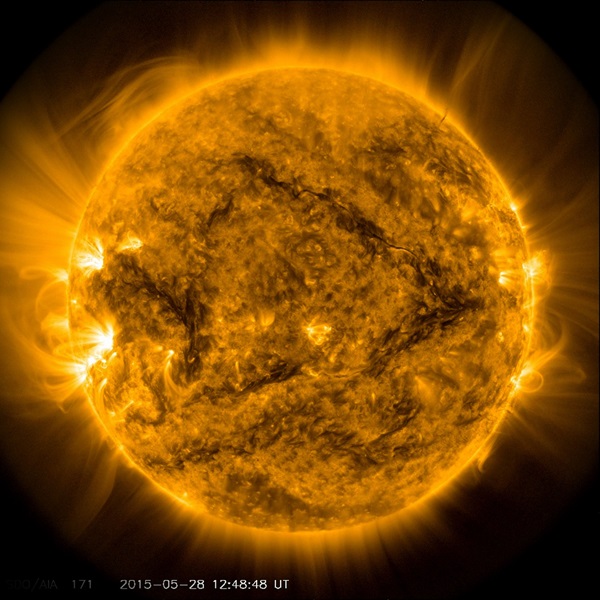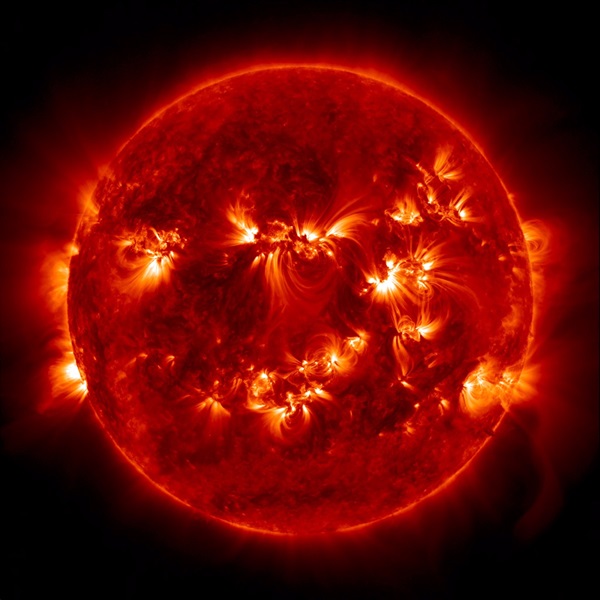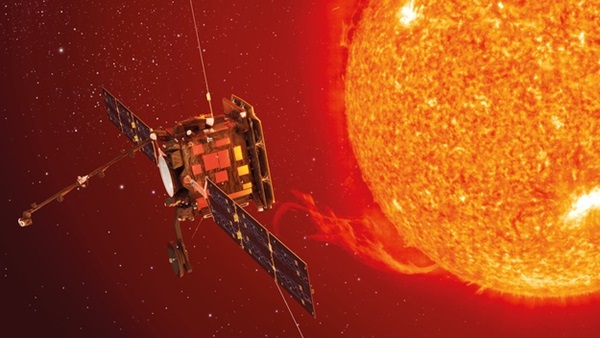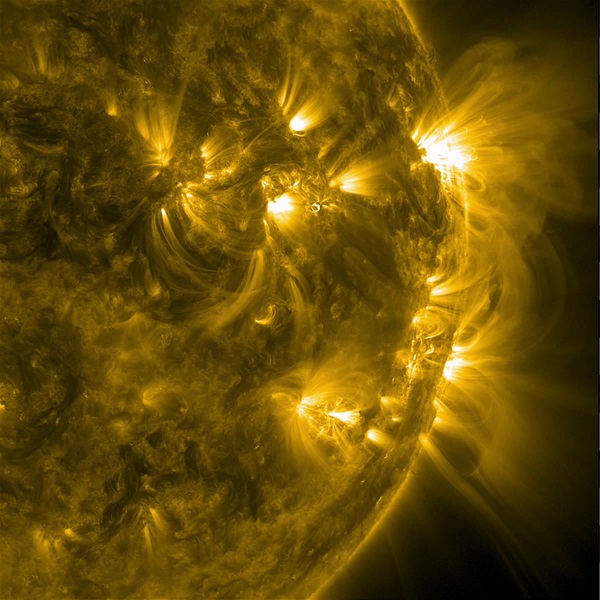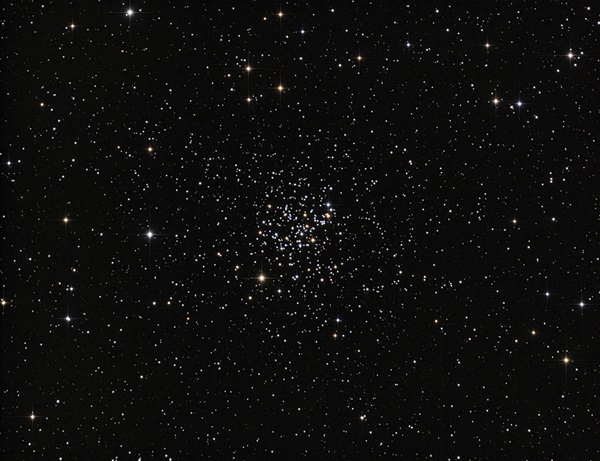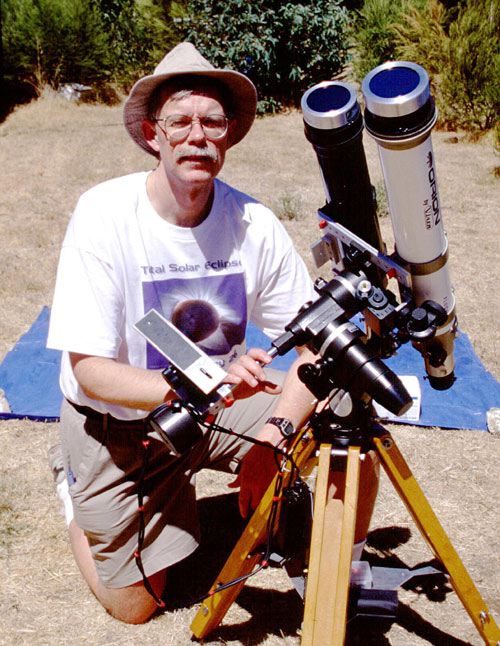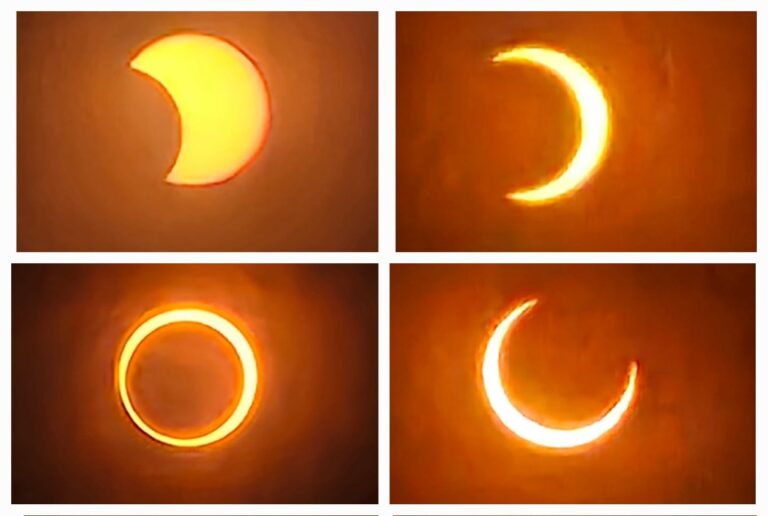Key Takeaways:
The Sun is supposed to follow 11-year cycles of minimum and maximum activity that should trace set patterns pretty much like clockwork, give or take weaker and stronger sunspot patterns, flares, and periods of coronal mass ejections. But solar cycle 24, which began in 2008, and the predictions for cycle 25, which will commence in 2020, take the cake for anomalous behavior.
The sunspot maximum of cycle 24, which began almost a year late, looks to be the smallest in 100 years and the third in a trend of diminishing activity within sunspot cycles. So, cycle 25 likely could be smaller than cycle 24.
“The leading [solar polar magnetic field] indicator in use for solar cycle 25 shows that the next cycle will be similar to the current one,” says astrophysicist Dean Pesnell of NASA’s Goddard Space Flight Center in Maryland. “This indicator has been accurate for the last four cycles.” Unfortunately, astronomers cannot accurately forecast the level of solar activity much past the next maximum, Pesnell says. He notes that the internal process that recycles and amplifies the magnetic field still is not well understood.
This peculiar solar behavior raises questions for astronomers. Does the previous cycle hint at what the Sun has in store in the future? What can we expect for the next two or three solar cycles? Is Earth destined for a colder climate rather than a warmer climate? And could our idea about our own spectral type G2 star’s peculiar midlife behavior need tweaking or even be flawed?
Cycle 24 is one of the weakest sunspot and magnetic activity cycles in more than a century, says Edward Guinan, an astronomer at Villanova University. Cycle 24 (and probably cycle 25) could be part of a suggested 100-year cycle that appears in the solar sunspot record known as the Gleissberg Cycle, he says. “Analysis of trends and magnetic field strengths does indicate that the upcoming sunspot minimum will be very low, and [cycle 25] will also be about the same or even at lower activity than the current one,” says Guinan.
Without a predictive theory for the solar dynamo — the physical process that generates the Sun’s magnetic fields — it isn’t clear what we might expect for the next few cycles, says Mark Giampapa, deputy director of the National Solar Observatory (NSO) in Tucson, Arizona. “Right now, the subsurface flow fields would seem to indicate that cycle 25 will be even weaker than the current cycle, with fewer than 100 spots,” he says.
However, David Hathaway, an astrophysicist at NASA’s Ames Research Center, says cycles tend to grow bigger and bigger over five to six cycles and then become smaller and smaller over the following five to six cycles. He notes that the Sun is currently in a phase of declining activity.
Solar cycles hinge on the creation of the Sun’s magnetic fields. Researchers think these fields are triggered by the star’s internal differential rotation — the rotation of the solar atmosphere at different speeds, latitudes, and depths. The Sun spins more slowly at the poles than at its equator. Twisting or turning these magnetic fields within the Sun’s photosphere (visible surface) may, in turn, play a role in generating sunspots.
Astronomers believe solar magnetic fields are generated by dynamic flows of electrically conducting plasma in the Sun’s interior. This, in turn, generates electric currents that create the Sun’s active dynamo, responsible for generating magnetic fields. Changes in differential rotation can weaken the solar dynamo, however. And if the dynamo is weakened enough, it can spiral into what is known as a Grand Minimum. The best known of these was the so-called Maunder Minimum, a 70-year period of diminished solar activity from 1645 to 1715. During this time, observers often recorded no sunspots for years.
These days, the Sun is active, but unusual in its lack of sunspots. What could be causing this? Cycle 24 resembles cycles 14 and 15 at the start of the 20th century, says Giampapa, and he points out that the real question may be this: What drove the preceding series of strong cycles that we refer to as the Modern Maximum, which is generally thought to have begun with cycle 15 in 1914? “Without a complete theory for the solar dynamo, it’s difficult to know the actual driver for the weak sunspot cycles,” he says.
Throughout most of the 19th century, the number of sunspots tended to be a bit low. But from 1930 to 1990, the Sun seemed a bit more active than usual. “There are myriad ways to ‘predict’ the strength of a solar cycle, but most of them fail,” says Sarbani Basu, a Yale University astronomer. “If, as some have suggested, the solar cycle strength is a chaotic phenomenon, then of course there really is no way to predict it.”
How are such sunspot cycles created? Dibyendu Nandi, a space scientist at the Indian Institute of Science Education and Research in Kolkata, explains that the cycle arises when the energy of the Sun’s internal plasma flows gets converted into magnetic energy. The Sun’s polar (north-south) magnetic fields, in turn, are built over the course of a cycle by the poleward transport of the magnetic field that emerges at the surface in active sunspot regions, says Hathaway.
These north-south magnetic fields thread through the Sun’s convection zone, where differential rotation shears them out. This means the outer layers rotate faster at the equator and slower at the poles. “These sheared fields become oriented east to west and become so strong that they emerge through the surface in active regions but with east-west polarities opposite to that of the previous cycle,” says Hathaway.
The strength of a cycle, Hathaway points out, is determined by the strength of the Sun’s polar fields at the start of the 11-year solar cycle. The strength of the polar fields, in turn, is determined by the strength and number of active regions that erupted during the previous cycle.
Astronomer Travis Metcalfe noted in a recent paper in The Astrophysical Journal Letters that as stars age, their rotation slows via a process known as magnetic braking. Metcalfe, the paper’s lead author and an astronomer at the Space Science Institute in Boulder, Colorado, says the Sun has likely already entered into a new, unpredicted, long-term, more quiescent phase of its evolution.
This relatively quiet phase would play out over several hundred million years, says Metcalfe. As a result, the Sun’s short-term cycles will eventually disappear, he adds. But do we know for sure that the Sun has already reached a quiet middle age?
“To test this hypothesis, we need to monitor the activity of a lot more stars that have been determined to be true analogs of our own Sun,” says Giampapa. “Whether the onset of such a quiescent phase of solar-like activity has started already in the Sun is still an open question.” Metcalfe and colleagues’ efforts are irrelevant if we’re talking recent fluctuations in the strength of the solar cycle, says Basu. “Their work basically implies that about 2 billion years ago or earlier, the Sun should have been much more active,” she says.
Guinan says that from studying stars of similar age and spectral type to our Sun, his team has concluded that for the most part, these solar analogs appear to have coronal X-ray and chromospheric activity and cycles similar to our Sun. He notes some bright examples, including 18 Scorpii, a solar twin some 45 light-years away, and nearby Alpha Centauri A, a solar-type star some 4 light-years away.
An interesting test of this, says Guinan, would be to observe spectral type G stars in the solar-aged open star cluster M67 to see if their activity levels, rotations, and spot coverage are Sun-like or not. NASA’s Kepler space telescope recently observed this important cluster, he notes, and Guinan says he and his colleagues are currently analyzing Kepler observations of solar-type stars in M67. Past studies of spectral type G stars in M67 show similarities in behavior to the Sun, says Guinan.
“There are indications that the Sun is in a transitional phase of its magnetic dynamo activity, but [one] that is apt to last many millions of years,” says Hathaway. “Models for the Sun’s convection zone dynamics [coupled] with the Sun’s current rotation rate tend to produce slower-rotating equators and faster-rotating poles.” So, is this a grand minimum of some sort?
Hathaway says it’s more likely that their work suggests that this is not a grand minimum like the Maunder Minimum, where sunspots were not seen for decades, but rather a small minimum, like the Dalton Minimum some 200 years ago.
However, Nandi points out that we have not even reached the low levels seen during the Dalton Minimum — which constituted a few weak cycles from 1790 to 1830 — after which the Sun recovered dramatically. And past evidence contradicts the supposition that a couple of weak cycles, says Nandi, will always lead to a grand minimum.
Could our theories about our star’s behavior be flawed or need tweaking? No, says Basu. Ideas about the Sun’s G2 spectral classification seem to be correct, she says. “What we have not yet been able to get right is the behavior of magnetic fields over short timescales [like the 11-year solar cycle],” says Basu. “The latter is what most solar physicists are busy studying these days.”
As Giampapa notes, a predictive theory for the nature and evolution of magnetic activity in the Sun and stars is incomplete. It‘s not yet clear how these weak cycles will affect climate.
“The recent recalibration of the sunspot number makes it even clearer that the Sun’s effect on climate is minimal and limited to the 0.1 percent variation in the Sun’s luminosity (radiative output),” says Hathaway. “This gives a small 0.1 degree centigrade change in global temperature — far too small to produce a ‘Little Ice Age.’ ”
But does the lack of sunspots affect climate at all? Guinan says the only way he could see solar activity affecting global climate is via its effects on Earth’s upper atmosphere.
During the solar cycle, the Sun’s luminosity varies by only 0.2 percent, Guinan explains. But he notes that solar X-ray intensity can vary by a factor of six to eight times while solar output in the far ultraviolet spectrum can vary by 20 percent over any given solar cycle. So if high-energy solar emissions affect Earth’s thermosphere and stratosphere via some unknown amplified feedback mechanism, this could affect the energy dynamics of Earth’s lower atmosphere, even to the extent of altering planetary circulation and inducing a small change in global temperatures, Guinan says. But recent space missions have allowed researchers to study the connections between internal solar dynamics (through probes of the Sun’s internal flows) and its magnetic and particulate output.
What more can we do to figure this all out? State-of-the-art computing power is enabling more realistic solarlike physical parameters in computer simulations. But what would really help would be a space mission that can observe the Sun’s polar field from above or below and observe how it behaves during the 11-year solar cycle, says Nandi.
The European Space Agency’s Solar Orbiter, expected to launch in 2018, would do exactly that and lead to more accurate sunspot cycle forecasts. Nandi says a dedicated mission to study the X-ray output of solarlike stars at different hydrogen-burning main-sequence ages (including the Sun’s age) would also be helpful in terms of figuring out the variability of stellar magnetism over a star’s lifetime.
“We are just beginning to appreciate the intricate ways in which the activity of parent stars influence planetary evolution and habitability,” says Nandi. Future missions such as Solar Orbiter, NASA’s Solar Probe Plus (due for launch in 2018), and ISRO’s Aditya-L1 mission (India’s first mission to study the Sun by 2020) are expected to contribute to this understanding.
“But what we really need is an expansion of observational work dedicated to recording the long-term and short-term nature of activity in a sample of stars [that] closely resemble the Sun,” says Giampapa. Then we need a complementary sample of stars that is different from our Sun in the key parameters that theorists need to test their models of the Sun’s magnetic field generation and evolution.
This would help researchers understand the relative importance of certain physical parameters such as solar rotation, convection zone depth, the Sun’s effective temperature, and its age or evolutionary status. The Sun’s convection zone ranges from about 124,000 miles (200,000 kilometers) in depth up to the photosphere, where photons are created. “We need more modeling work on the dynamics of the Sun’s convection zone and the effects of the Sun’s rotation on those dynamics,” says Hathaway. “Solar Orbiter [will] reveal the details of the Sun’s subsurface convection zone dynamics.”
But which has the bigger impact on climate: solar dynamics or anthropogenic climate change? “Relevant questions include whether solar effects amplify or mitigate human impacts,” says Guinan. Nandi, however, remains skeptical that the vagaries of the Sun’s 11-year cycles have made a significant impact on Earth’s climate.
Climate physicists and climate modelers have concluded that the impact of solar variations on global temperature change in the past few decades is far less than that due to anthropogenic factors, says Nandi. Until they understand the Sun much better, solar researchers still won’t be able to definitively connect the dots between climate on terra firma and the absence or abundance of sunspots on our nearest star.

